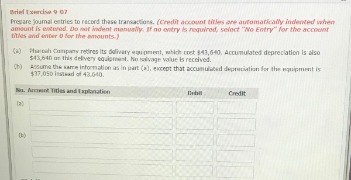Reporting just the latest dollar amounts makes it hard to compare the performances of companies of various sizes. Adding prior period figures, complete with percentage changes, helps Comparative Balance Sheet Definition to eliminate this problem. The comparative financial statement makes it easier to look at the performances of the company in multiple periods just by looking at only one document.
For the estimation of an organisation’s future progress, it is essential to look into its past performance, for which performing a comparative study of two or more years of company financial statements becomes necessary. One can form an opinion on the progress of an enterprise based on the comparative statements. Comparative financial statements are statements which show a company’s statement in two or more consecutive periods in a single statement. Usually, the entities included in the comparative financial statements include balance sheets, profit and loss accounts, and cash flow statements for two consecutive years. This balance sheet also reports Apple’s liabilities and equity, each with its own section in the lower half of the report.
AccountingTools
The income statement and statement of cash flows also provide valuable context for assessing a company’s finances, as do any notes or addenda in an earnings report that might refer back to the balance sheet. Comparative statements can also be used to compare different companies, assuming that they follow the same accounting principles. For example, they can show how different businesses operating in the same industry react to market conditions.

The latter is based on the current price of a stock, while paid-in capital is the sum of the equity that has been purchased at any price. Shareholder equity is the money attributable to the owners of a business or its shareholders. It is also known as net assets since it is equivalent to the total assets of a company minus its liabilities or the debt it owes to non-shareholders. https://kelleysbookkeeping.com/book-balance-definition/ Comparative statements are less reliable when companies undergo huge changes. A big acquisition and move into new end markets can transform businesses, making them different entities from previous reporting periods. Different accounting systems and ways of dealing with depreciation and inventories will also change the figures posted to a balance sheet.
Comparative Statement Limitations
These revenues will be balanced on the assets side, appearing as cash, investments, inventory, or other assets. The comparative financial statement also provides a comparison of expenses to that of revenues which can be useful for cost management purposes. Moreover, as the statement offers an insight into future trends, it can help companies manage their costs in different operational and financial domains. Moreover, as the comparative financial statement contains data for two or more financial periods, it makes analyzing the basics of two companies easier by looking at a single statement.
Hudbay Announces First Quarter 2023 Results — EIN Presswire — EIN News
Hudbay Announces First Quarter 2023 Results — EIN Presswire.
Posted: Mon, 08 May 2023 07:00:00 GMT [source]
Harold Averkamp (CPA, MBA) has worked as a university accounting instructor, accountant, and consultant for more than 25 years. Accounting treatment or entries related to items like Money received against Share Warrants, Application Money Pending Allotment, Deferred Tax Assets, etc., will not be asked in the examination.
Advantages of Comparative Balance Sheet:
Last, a balance sheet is subject to several areas of professional judgement that may materially impact the report. For example, accounts receivable must be continually assessed for impairment and adjusted to reflect potential uncollectible accounts. Without knowing which receivables a company is likely to actually receive, a company must make estimates and reflect their best guess as part of the balance sheet.
Why use a comparative balance sheet?
The purpose of comparative balance sheets is to ascertain the company's financial position and assets and liabilities. It creates a conclusive interpretation of how the company has performed in the previous financial year.

